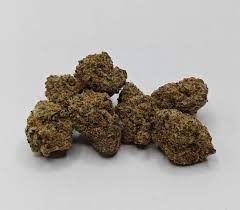
Jared Kamrass: The Role of Social Media in Political Campaigns
In today’s digital age, social media has revolutionized the way political campaigns are conducted. It has become an essential tool for candidates to connect directly with voters, shape their narratives, and mobilize support. Jared Kamrass , a prominent political strategist, recognizes the growing significance of social media in political campaigns and its potential to influence public opinion. In this article, we will delve into the role of social media in political campaigns and its implications for modern-day politics.
Social media platforms offer candidates a direct line of communication with voters, allowing them to bypass traditional media gatekeepers and convey their messages on their own terms. This level of control over their narratives is crucial, as it enables candidates to present themselves authentically and engage with voters in a more personal and relatable manner. Platforms like Facebook, Twitter, Instagram, and YouTube have become virtual campaign headquarters, providing a space for candidates to share their vision, values, and policy proposals.
However, while social media presents tremendous opportunities, it also poses risks. Jared Kamrass acknowledges the potential for misinformation, fake news, and divisive rhetoric to spread rapidly through these platforms. The viral nature of social media amplifies the impact of such content, making it essential for candidates and their teams to be vigilant and responsible in their use of these platforms. Proper fact-checking, moderation, and engagement strategies are crucial to mitigate the negative effects of misinformation and maintain the integrity of political discourse.
It is worth noting that social media’s role in political campaigns is not a recent phenomenon. Political campaigns have been utilizing social media since the early 2000s, with the 2008 presidential campaign of Barack Obama serving as a milestone in its innovative use. Obama’s campaign leveraged social media platforms, particularly Facebook and Twitter, to mobilize a broad base of supporters, engage young voters, and foster a sense of community around his candidacy.
Subsequent elections witnessed the integration of social media into campaign strategies by candidates from various political affiliations. In the 2012 presidential campaign, both Mitt Romney and Barack Obama utilized popular social media platforms to share their messages and connect with voters nationwide. Fast forward to today, and presidential candidates continue to explore new ways to leverage the power of social media, incorporating features like photo-sharing and video-sharing to engage and resonate with audiences in unprecedented ways.
The use of social media in political campaigns extends beyond mere communication. It serves as a platform for fundraising, grassroots organizing, and volunteer mobilization. Candidates can leverage social media algorithms and targeting capabilities to reach specific demographics and build engaged communities around their campaigns. Additionally, social media provides a valuable feedback mechanism, allowing candidates to gauge public sentiment, address concerns, and adapt their messaging accordingly.
In conclusion, social media has become an indispensable component of modern political campaigns. Jared Kamrass recognizes its power to shape narratives, connect candidates with voters, and mobilize support. However, the responsible use of social media is crucial to mitigate the risks associated with misinformation and divisive rhetoric. With its ability to transcend traditional advertising channels, social media empowers candidates to reach a broader audience and build meaningful connections. As technology continues to evolve, the role of social media in political campaigns will undoubtedly evolve alongside it, shaping the future of political communication and engagement.


